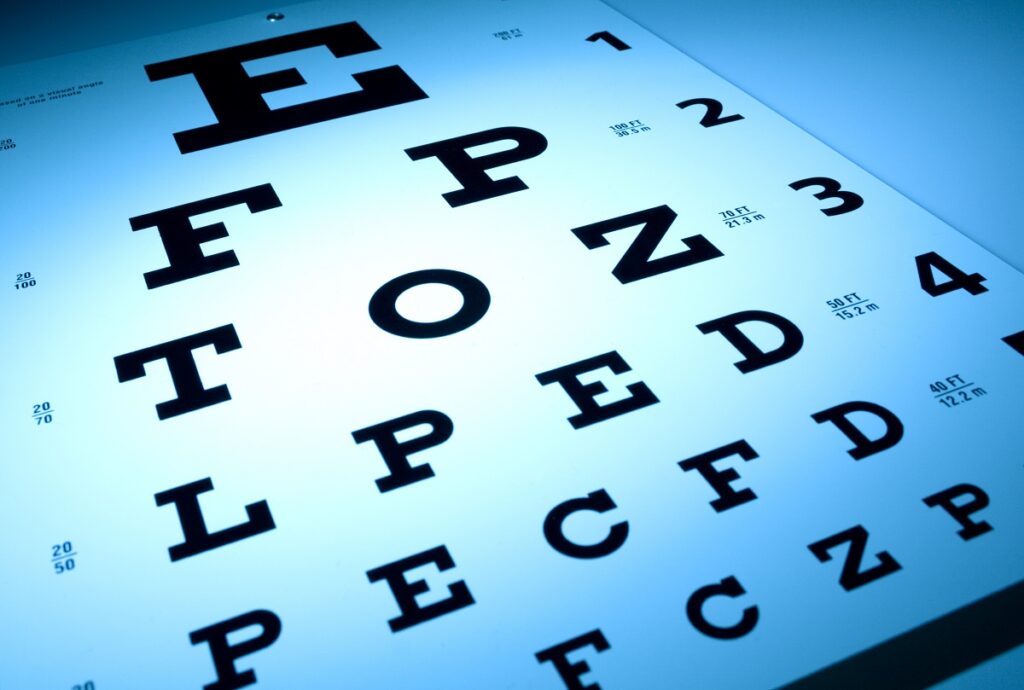Of all of the complicated concepts in eye care, having 20/20 vision is one of the most misunderstood. Many people are confused by what this measurement means, or they assume 20/20 is as good as it gets when it comes to vision. Dr. Linda Vu sets the record straight in this blog post.
What Does 20/20 Mean?
20/20 vision is an indication of visual acuity measured during a vision screening or an eye exam. If you have 20/20 vision, it means that what you see at 20 feet is what a person with normal vision can see at 20 feet.
20/20 vision is the standard people use when referring to good vision; however, it is not as good as it gets. Knowing how visual acuity is measured can help you understand why.
How Is Visual Acuity Measured?
Visual acuity is usually measured using an eye chart called a Snellen chart, which was developed in 1826 by a Dutch ophthalmologist named Herman Snellen.
If you have ever had a vision screening or an eye exam, you are familiar with the Snellen chart. The chart consists of rows of letters; the letter in the top row is very large and then the letters get progressively smaller with each row after that. During a screening or exam, you are asked to stand 20 feet away from the chart and read it from top to bottom with one eye covered, then again the other eye covered.
Each line of the Snellen chart correlates with a “Snellen fraction.” The top number of the fraction refers to the viewing distance between you and the eye chart (in America, it is always 20 for 20 feet). The bottom number refers to the distance at which a person with normal vision can read the same line.
The top row of the Snellen chart is assigned the fraction 20/200. With each subsequent row, the second number of the Snellen fraction gets smaller to correlate with better visual acuity. The last row of letters that you can read gives you the Snellen “fraction” that best fits your visual acuity.
The row for 20/20 vision is not at the bottom of the chart. There are three additional rows below the 20/20 line to measure whether you can see better than people with normal vision. For instance, young individuals with healthy eyes may be able to read the letters on the 20/15 line of the Snellen chart, meaning they can see clearly at 20 feet what people with normal eyes can see at 15 feet.
Only a Piece of the Puzzle
Your Snellen fraction does not provide a complete picture of your overall visual skills and abilities. It does not measure other components of your vision such as peripheral (side) vision, color vision, depth perception, eye coordination or focusing ability. Only a complete eye exam with other tests can provide more clues about how your eyes work.
For more information about what it means to have 20/20 vision, or to schedule an exam to test your visual acuity, contact the team at Linda Vision today.

